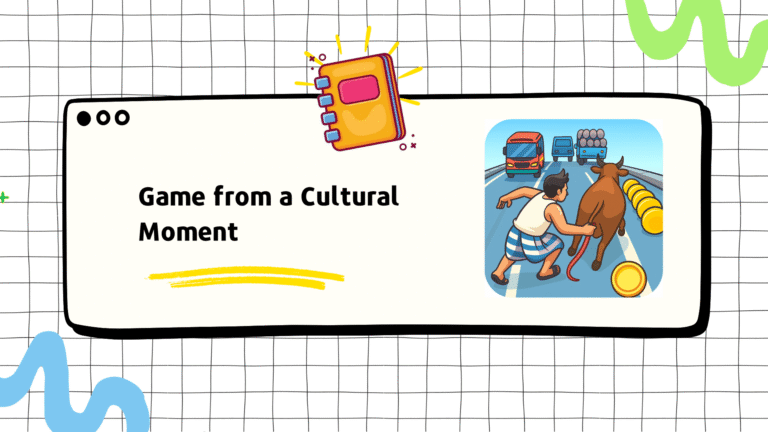Monument Builder

Context & First Signals
Before Ant Colony, we tested Monument Builder as part of our exploration into arcade idle games. In this prototype, players collected resources, and NPC builders used them to gradually construct monuments. I was the designer and developer working with an artist.
Test Results (315 Users)
- CPI: $1.27 (high)
- D1 Retention: 19.68% (low)
- Playtime Day 0: 1,306 sec (interesting)
- Playtime declined quickly, with Day 3 at 875s and Day 7 under 400s
Insights
Despite a high CPI, the concept showed a spark: players engaged early with the progression loop and stuck around longer than expected compared to typical arcade idle prototypes. The core mechanic: visual progression through construction, was compelling, but CPI was too high for scaling.
This gave us the direction: refine the loop, lower CPI, and improve retention. That led directly to Ant Colony.
Ant Colony

Concept & Development
Building on the “visual satisfaction” of Monument Builder, I designed Ant Colony. Instead of NPC builders, the player controls a main ant that commands worker ants by dropping resources. I thought we can capitalize on the feeling of playing with ants as children. The appeal came from spawning ants, and watching the colony expand in real time.
I structured development around two-week sprints, brainstorming new ant types, enemies, and colony expansions.
First Test
- CPI: $0.77 (significant improvement vs. Monument Builder’s $1.27)
- D1 Retention: 27.68% (improvement, but not quite there)
- Playtime Day 0: 1,558 sec (higher than Monument Builder’s 1,306s)
Players were more engaged, but early retention required improvement
Iteration & Optimization
I addressed performance: with 100+ worker ants, the framerate dropped. I removed skinned renderers, used DoTween animations, and batched ants dynamically, cutting draw calls by ~50%. I also stopped updates for off-screen objects.
I added more levels, different types of ants, and added a lot more mechanics. After a few more tests and iterations, we landed on the final test

Final Test (5.9K Users)
- CPI: $0.70 (Improved)
- D1 Retention: 34.68% (up from 27.68%)
- D14 Retention: 1.34% (still very low)
- Playtime Day 0: 2,257 sec (highest of all tests)
- Playtime stayed above 1,000s for 10 days, with a spike at Day 12 (1,763s)
Outcome
Ant Colony crossed one million downloads. CPI was strong and early engagement solid, but low long-term retention and weak monetization meant the game couldn’t scale profitably.
Takeaway
Compared to Monument Builder, Ant Colony hit the right notes on CPI and short-term engagement, but the lack of scalable progression and monetization capped its potential.
Bee Colony

Context
Encouraged by Ant Colony’s playtime but limited scale, we wanted a follow-up with stronger marketability. We leaned on the Bee Movie for theme and visuals.
Development Approach
I implemented bee AI using Opsive’s Behavior Tree asset, aiming for more dynamic worker behavior. The goal was to add depth and replayability.
Test Results (534 Users)
- CPI: $0.91 (worse than Ant Colony’s $0.70)
- D1 Retention: 27.53% (comparable to Ant Colony’s first test, lower than its final)
- Playtime Day 0: 1,593 sec (slightly better than Monument Builder, but below Ant Colony’s final)
- By Day 6, playtime fell to ~500 sec, and stayed under 250s afterward
- D14 Retention: <1% (steeper drop-off than Ant Colony)
Outcome
The higher CPI and weaker retention made it clear the new theme wasn’t resonating. Instead of iterating further, we pivoted away.
Takeaway
Monument Builder proved the power of visual progression but also highlighted the challenge of scaling without a marketable hook. The concept was engaging, but the high CPI made it clear that a fresh angle was needed.
Ant Colony delivered on what Monument Builder lacked: lower CPI and strong early engagement. But it also exposed the limits of visual progression as a standalone driver. Without scalable monetization or deeper retention systems, the game plateaued despite one million downloads.
Bee Colony showed that innovation and reskinning alone aren’t enough. Even with new AI systems and a strong theme, it failed to capture market interest. The lesson was clear: true success in the F2P genre requires the right mix of engaging gameplay, retention design, monetization depth, and above all, good marketability.





